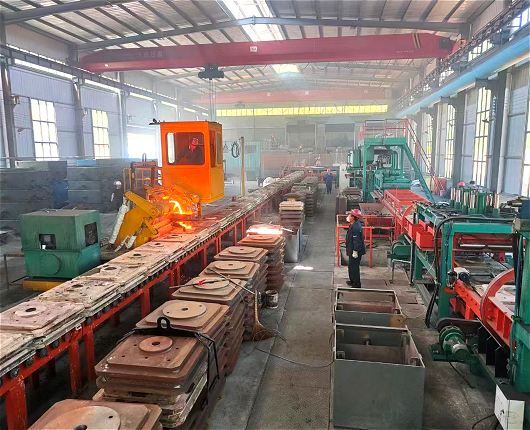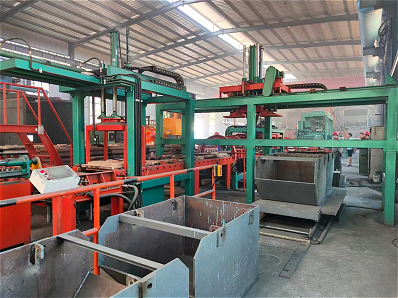
The Iron Mold Sand-Coated Plant (it is metal mold sand-coated casting and belongs to a special casting technology) is a casting process that covers the inner cavity of the metal mold with a thin layer of molding sand to form a mold. It combines the advantages of metal mold casting and shell mold casting. It is widely used in the mass production of high-end automotive lightweight castings, as well as engine castings, elevator castings, wear-resistant castings, etc. that require high performance and high safety.



The Iron Mold Sand-Coated Plant uses the coated sand for thermal curing molding. The casting mold has the characteristics of high dimensional accuracy, good surface quality, and no compromise. It is especially suitable for various types of castings with higher quality requirements, especially for nodular iron castings, the self-compensated contraction caused by graphite dilatation in the solidification process of nodular cast iron makes casting with less flow-off or casting without flow-off possible.
Since the iron molds vary according to the shape of the castings produced, they are not universal. The cost of the molds required for casting production is higher. From the point of view of economic, castings suitable for iron mold sand-coated casting must has characteristics of large-scale production.
At present, in actual production, sand coating molding is completed by a sand coating molding machine, and other processes are completed by various auxiliary equipment. The auxiliary equipment can be divided into two types: pneumatic and manual. There are also two types of rollers for conveying iron molds, manual and motorized, to adapt to the requirements of different degrees of mechanization.
Since the iron mold is covered with sand, there will be no pits in the inner cavity of the mold after being used many times, making the surface of the produced high-chromium sphere smooth and pit-free.
Advanced CAD/CAM/CAE technology has been introduced into the modern iron mold sand coating process. Through simulation and optimized design, the forming accuracy and process stability of castings have been improved. At the same time, the application of robotic technology has also enabled partially automated production, further improving production efficiency and product quality.
The sand materials and molds used in the iron mold sand coating process use new high-temperature wear-resistant materials, which improves the service life and high-temperature resistance of the molds, and enhances the quality and stability of the castings.
Customized design according to the actual needs of customers.
The iron mold sand coating process has established a database and information system through digital management, which can monitor the production process, improve production flexibility and response speed, and also provide convenience for quality traceability.
Because the casting mold composed of the iron mold and the sand coating layer has good rigidity, fast cooling, and good density of the sand coating layer, the castings produced have high dimensional accuracy, small machining allowance, good surface quality, dense internal structure, and good product quality consistency. And because the equipment takes up less space, requires less investment, and has quick results, it is popular with many small and medium-sized enterprises.




Mold making:
Make the basic frame of the sand mold covered with iron film in the mold, and determine the dimensions and shape of the casting and other parameters.Coating with iron film:
Using vacuum evaporation technology, a layer of iron film is coated on the surface of the mold to ensure that the sand core remains intact. The thickness of the iron film is usually between 10-15 microns.Sand mold making:
Fill the mold covered with iron film with an appropriate amount of mortar, and compact it manually or use vibration technology to create the sand mold required for castings. At the same time, air and impurities are eliminated through the discharge hole.Casting:
After the sand mold is completely dry, proceed with casting. Pour the molten metal raw material into the sand mold and cast it evenly into the sand mold. After the metal cools and solidifies, it is taken out to complete the remaining castings.

| Type |
Size of sand box |
Compacting pressure |
Power |
Machine size |
| DL-ZX3040 | 350*450 | ≤10 | 15 | 4150*1890*3050 |
| DL-ZX4050 | 410*510 | ≤12 | 15 | 4080*2100*2980 |
| DL-ZX5060 | 500*600 | ≤14 | 15 | 4400*2100*3200 |
| DL-ZX6070 | 600*700 | ≤14 | 24 | 4700*2410*3540 |
*The output will vary according to different materials, feed particle size and other factors
Save Time! Get A Detailed Quotation Quickly.
